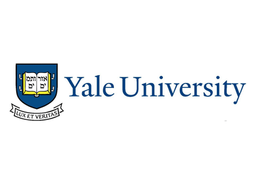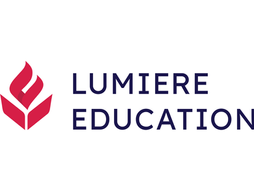Everything You Need To Know About NASA's Student Launch Challenge for Middle School Students
When it comes to STEM competitions, there’s a huge variety of experiences that you can participate in – everything from quizzes, to olympiads, to robotics challenges, and more. However, if you make your mark in a prestigious rocket design competition hosted by none other than NASA? That’s a surefire way to make your profile truly stand out when it comes to college applications or even job offers. Engaging in an event like NASA's Student Launch Challenge, the subject of today’s blog post, is a phenomenal opportunity to deepen your STEM knowledge and sharpen your problem-solving and teamwork skills by solving a complex challenge far beyond anything you would experience in middle school, high school, or even college. If you want to learn what this competition demands of an applicant, then this blog covers all the must-knows.
What is NASA’s Student Launch Challenge?
The NASA Student Launch Challenge is a 9-month long competition that challenges college, high school and middle school teams to design, build, test, and launch a high-powered rocket carrying a scientific or engineering payload. This initiative by NASA’s Marshall Space Flight Center is designed to offer a practical insight into the engineering design process that mirrors the real-world scenarios NASA engineers face daily. You will gain an intensive, hands-on experience in constructing and executing a complex rocket design project from start to finish under NASA’s guidance. Aside from the enormous amount of learning you can attain in this attempt, a depth of STEM application that’s impossible to get in school, being part of such a prestigious competition also enhances your profile significantly and highlights your ability to tackle advanced STEM projects and contribute to real-world aerospace endeavors.
Is it prestigious?
Absolutely! NASA's Student Launch Challenge is highly regarded nationally and even catches international attention. Each year, dozens of teams from various states participate, and that’s only after they have placed near the top in NASA’s other rocketry challenges to even qualify! The lengthy and technical nature of the challenge not only tests your technical skills and deepens your understanding of aerospace engineering principles, it also requires frequent review and interactions with NASA’s engineers and project management teams. Past participants have leveraged their experiences to secure positions at NASA and other leading aerospace entities, underscoring the challenge’s role as a critical stepping stone for future careers in STEM.
Who is eligible to participate?
NASA’s Student Launch Challenge is unique in the sense that you cannot simply apply to it on the basis of grades or other criteria. It has two extremely specific criteria – you need to have placed in one of the following rocketry competitions to be invited to submit a proposal for Student Launch:
The American Rocketry Challenge – top 25 placement in the finals.
Rockets for Schools – top 5 placement in Class II.
After you have so qualified, you also need to ensure that you have:
An adult advisor who will be working alongside your team for the upcoming activity year.
An adult mentor who meets the following qualifications:
A High-Powered Rocketry Certification of Level 2 or higher no later than the Preliminary Design Review Package (PDR Milestone) deadline.
Must have completed the launch and safe, dual-deployment recovery of at least 2 flights with the same (or higher) impulse class of motor the team intends to use for the Student Launch challenge no later than the Preliminary Design Review Package (PDR Milestone) deadline.
At least one qualified adult who has completed the Advanced Rocketry Workshop, either mentor or advisor.
Once these criteria are in place, you may create a profile on the NASA website and apply for the challenge.
How is the Student Launch Challenge structured?
The timeline for the entirety of the challenge is as follows:
August 14: Request for Proposal released.
September 11: Proposals due by 8 am.
October 4-5: Awarded proposals announced and PDR Q&A.
October 26: Preliminary Design Review (PDR) report and presentation slides due.
November 1-30: PDR video teleconferences.
December 7: CDR Q&A.
January 8: Subscale flight deadline and Critical Design Review (CDR) report and presentation slides due.
January 16 - February 6: CDR video teleconferences.
February 8: FRR Q&A.
March 4: Vehicle demonstration flight deadline and Flight Readiness Review (FRR) report and presentation slides due.
March 11-29: FRR video teleconferences.
April 1:
Launch window opens for teams not traveling to launch week, and they must submit their PLAR within 2 weeks of launch.
Payload Demonstration Flight and Vehicle Demonstration Re-flight deadlines.
FRR Addendum due.
April 4: Launch week Q&A.
April 10: Arrival in Huntsville, AL for Launch.
April 13-14: Launch Day
April 23: Post Launch Assessment Review (PLAR) report due.
April 30: Launch window closes for teams not traveling to launch week, and they must submit their PLAR within 1 week.
All this information, and everything else you need to effectively participate in the challenge, is available in the Student Launch Initiative Handbook and we highly suggest you read every relevant section thoroughly!
While you can read the details at your leisure, here’s a primer on what final deliverables you will need to submit over the course of the challenge:
A reusable rocket with required payload system ready for official launch.
A scale model of the rocket design to be flown during the PDR or CDR milestones.
A full scale Vehicle Demonstration Flight and Payload Demonstration Flight with the relevant data to be reported in the FRR.
A team social media presence maintained and updated throughout the year.
The following reports as mentioned in the timeline: a. Preliminary Design Review (PDR): An up to 250 page long report demonstrating adherence to design requirements, cost, schedule, technical constraints, management systems, and interfaces. b. Critical Design Review (CDR): A progress report that ensures that the technical effort is on track to complete light and ground system development and mission operations in order to meet overall performance requirements. The CDR is a review of the final design of the launch vehicle and payload system. c. Flight Readiness Review (FRR): This report is meant to examine tests, demonstrations, analyses, and audits that determine the overall system readiness for a safe and successful flight/launch and reuse of the rocket and payload system. d. Post-Launch Assessment Review (PLAR): The complete assessment of system in-flight and payload mission performance from your final competition launch.
What are the awards on offer?
There are a number of awards that you stand to win:

As explained in the description for each award, the scoring is based on the rocket’s design, functionality, payload efficacy, and adherence to safety protocols, alongside a successful launch and recovery.
Pros and cons to consider
Pros:
It’s a fantastic opportunity for academic growth: You’ll get direct exposure to NASA’s engineering processes in the most practical way possible – by working on your own rocket design project. The amount you stand to learn from such an advanced, complex and in-depth project is staggering.
Immense practical learning: Participating in this challenge deepens understanding of complex scientific concepts by letting you work on them yourself, and learning relevant aeronautics skills in the process.
The potential for recognition: Having this challenge on your resume will ensure that you will get recognized in the academic and professional aerospace communities, due to its highly selective and intense nature.
Cons:
It’s extremely resource intensive: Participating in the Student Launch Challenge requires significant investment in time, effort, and sometimes financial resources.
There’s a lot of pressure: While not strictly a con, it’s important to consider that the competitive environment can be quite stressful due to the high stakes nature of the challenge.
Accessibility is low: Since eligibility requires access to specific materials, a knowledge base, and advanced mentorship, it’s not an accessible competition. A lot of schools simply don’t have access to such resources.
Our review
The NASA Student Launch Challenge offers solid experiences and learning opportunities under the auspices of one of the most prestigious organizations in the world, that can significantly influence your future academic and career prospects in many STEM fields, not just aeronautics. While the eligibility criteria are stringent and the schedule is incredibly intense, the prestige and learning from participating are equally elevated. If you’re serious about pursuing a career related to aeronautics, trying to secure a place in this competition should be at the top of your priority list.
If you’re looking for a competitive mentored research program in subjects like data science, machine learning, political theory, biology, and chemistry, consider applying to Horizon’s Research Seminars and Labs! This is a selective virtual research program that lets you engage in advanced research and develop a research paper in a subject of your choosing. Horizon has worked with 1000+ high school students so far, and offers 600+ research specializations for you to choose from.
You can find the application link here
One other option - Lumiere Research Scholar Program
If you’re interested in pursuing independent research, you could also consider applying to one of the Lumiere Research Scholar Programs, selective online high school programs for students founded with researchers at Harvard and Oxford. Last year, we had over 4000 students apply for 500 spots in the program! You can find the application form here.
Also check out the Lumiere Research Inclusion Foundation, a non-profit research program for talented, low-income students. Last year, we had 150 students on full need-based financial aid!
Stephen is one of the founders of Lumiere and a Harvard College graduate. He founded Lumiere as a PhD student at Harvard Business School. Lumiere is a selective research program where students work 1-1 with a research mentor to develop an independent research paper.









